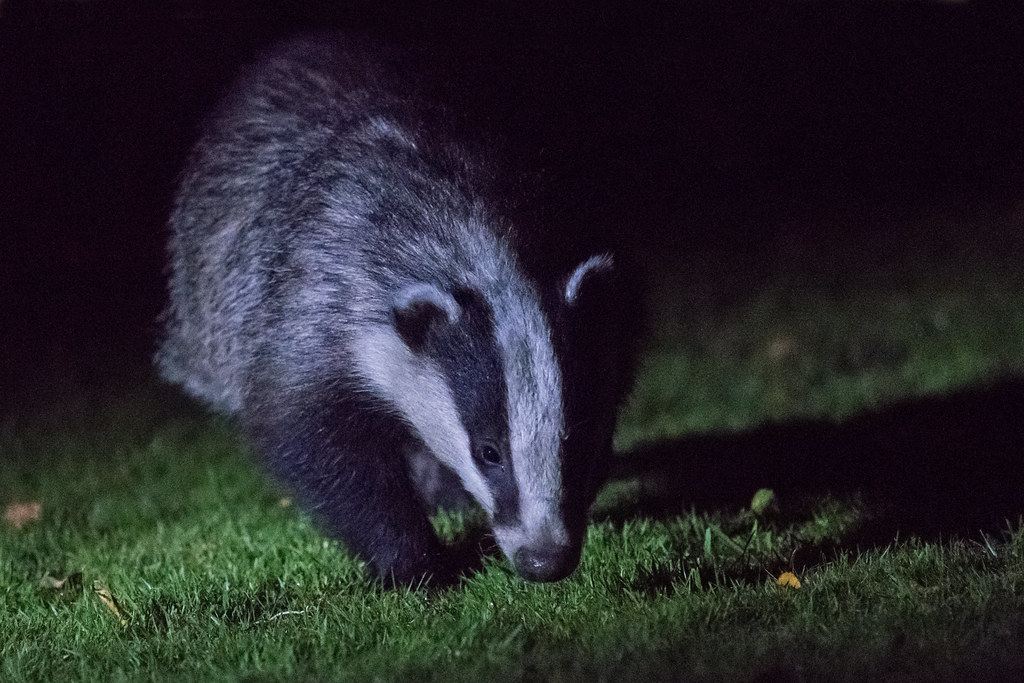
Tom Langton is an ecological consultant who has helped small organisations and individuals find free and low cost ecological advice and representation for legal cases over the last 15 years. These include many civil and criminal trials, with action for horseshoe bats in the Forest of Dean, damselflies, fish and rivers in New Forest and the SSSIs and international wildlife sites around Sizewell nuclear power station in Suffolk where he lives. More recent work includes helping a group of brave young protestors trying to save an amphibian breeding pond from open cast coal mining to walk free from Middlesbrough Magistrates. He helps run Badger Crowd that with the help of the Badger Trust has spearheaded tribunal and judicial review challenges against the badger culls in England since 2016.

Eco-impacts of badger culling. Natural England tries to show it can monitor effects.
Natural England have had former BTO chief executive Andrew Clements on its Board to help organise the English badger culls. A job that he still assists, including the killing of, sometimes very cruelly around 40,000 badgers in recent months. His dual role, included supplying BTO volunteers’ survey data to Natural England, who under legal challenge in 2017 were forced to try to show how they are on top of measuring and mitigating the side-effects of badger culls upon designated sites.
Back in 2018, in the middle of a very long legal battle, Natural England rushed out a report between court hearings, outlining ways in which they would consider and control ecological impacts of carnivore release effects upon SSSIs, designated European sites and protected species. It contained a report that was relied upon, that BTO and Natural England decided to keep secret from the public.
That report is: Kettel, E.F. and G. M. Siriwardena 2018. Comparisons of breeding bird population and abundance trends within and outside two specified areas located in SW England. Report to Natural England. British Trust for Ornithology, Thetford, Norfolk, UK. (See Mark’s blog from last July, Why is Natural England so reluctant to disclose a piece of science?)
The excuse was it was going to be published later, which is a traditional delaying tactic used by Defra, AHPA and NE and used repeatedly to frustrate access to information. It was not clear why but some said that they had, in effect lied to the judge, pretending they were doing enough work to satisfy their legal obligation to do so, when they were not. Withholding it reduced the chances of Natural England losing the case and it might just have made a difference between them carrying on fudging it and putting in place something robust and meaningful.
The 2018 report is still secret several years later despite its use in public decision making. Today BTO published a ‘beefed-up’ version of the report, with a NE minder added-in to the authorship. Hence the lame explanation that if fox numbers ever increase when badgers are culled, you don’t need to worry, as they quickly get ‘shot back’ to original numbers. This is as rubbish a statement today as it was back then, to a High Court.
In fact foxes who are known predators and disturbers of birds hardly get a mention in the paper while the badger, less of a hunter, who in most habitats comes across birds in an opportunistic manner gets the spotlight in an attempt to avoid the true trail that leads back to the court room.
The paper is a bit of a shocker from start to finish. Natural England statistical staff have been put on the job to model the information (we know what that means) and concluded nothing that dramatic really (as Mark said earlier today) other than there isn’t enough definitive evidence to be sure of the results. So another method must be found that doesn’t rely on small samples from volunteers that you cannot really rely on. There are some winners and losers in terms of ‘growth’ (the authors are referring to ‘change’, who edits this stuff?) when comparing places with and without culling, but it’s hard to be sure if this is representative and to distinguish changes from various other influences.
Apart from what might cynically be described as a thinly disguised ‘policy-based’ conclusion that the study shows “that large community-level changes [in birds] have not occurred.” There are suspicions that during review the tensions resulted in the ‘leaving in’ of such sentences that in fact conflict with each other, as with other badger cull science, giving the reader an opportunity to take away what they want from the paper. Something for everybody, especially those wanting to justify doing as little as possible when licensing the mass killing of badgers. How very Defra family.
But what about small and medium effects that could be catastrophic for a species now or in the long run and for which there is a legal obligation to detect and deal with? The abstract states : Analyses of survey data reveal no clear effects of the removal of European Badger Meles meles, a top predator in Great Britain, on bird populations.
Not a whiff of the uncertainty and the lack of definitive evidence. Uncertainty that is no-doubt reflected by the original report that is still being held secret. The actual findings are: Analyses of survey showed it to be insufficient to reveal true effects of the removal of European Badger Meles meles, a top predator in Great Britain, on bird populations.
Spot the difference? Perhaps there will be a clarification published in line with the BTO policy on research governance. RSPB are looking at such research standards closely too I understand and these apply to an important reference in this paper too.
While the authors beg correctly for a huge research pot to have proper oversight of the badger cull impacts, this needs to be taken further now if badger culling is to continue. Or rather badger culling stopped until a robust system is designed, tested and in place. Natural England have not done what they said to a High Court judge that they were doing and would do, which is to adequately monitor, detect and if necessary then control any impacts of badger culling on designated European sites and species. Large, medium and small and very subtle impacts. Can I hear the lawyers re-sharpening their pencils?
Mark writes: I’d welcome a BTO and/or Natural England perspective on this – perhaps as a guest blog. I’d also welcome a copy of the original ‘secret’ report.
[registration_form]
Tony Juniper is in charge of NE and he needs to be taken to task about misinformation, obscuration and secrecy that his staff have allowed themselves to rely upon in order to support Defra and the Government. He talks a different tune to the one NE actually plays.
BTO no doubt with its obviously usual amoral stance and claim “we just do science.” Depends entirely who for, what for , how the question is put and often why membership is excluded from seeing the results. Probably still taking dodgy money from GWCT as they did from SOS. It’s Ok it is to do with Curlew, sorry its not because it is used to justify woeful, damaging land management and predator control by MA and its pals.
When NE announced that they had this study underway, they were reluctant to admit that observers such as myself were correct to deduce that it was no more than a coarse grained analysis of lumpy BBS datasets. I remarked at the time that, if so, it was most unlikely that any such analysis would pick up anything less than catastrophic population impacts in badger culling areas, which was never likely. So it proves, and yet NE have sat on this ‘paper’ for years and the report remains secret. Why bother?
Well it’s because this near-certain end point of being unable to pick out a statistically significant change from comparison of BBS datasets is of course not the same as ‘no impact’, despite that being the conclusion one is being invited to take from the careful (to the point of disingenuous) wording of this paper. NE knew from the start that this was not robust science yet it wanted to bluff that it was for as long as possible before having to reveal its hand. That’s because it didn’t want the promises it made to escape sanction in the High Court to be revealed as empty.
My respect for NE on this issue could hardly drop any further, but the bit I find hardest to swallow here is BTOs complicity in the game of smoke and mirrors. This is not real science but pretend science contrived to fit a preordained policy position. Andy Clements, with his foot in both the NE and BTO camps throughout this fiasco, has some serious explaining to do. Here on your blog Mark would be a good place to start.